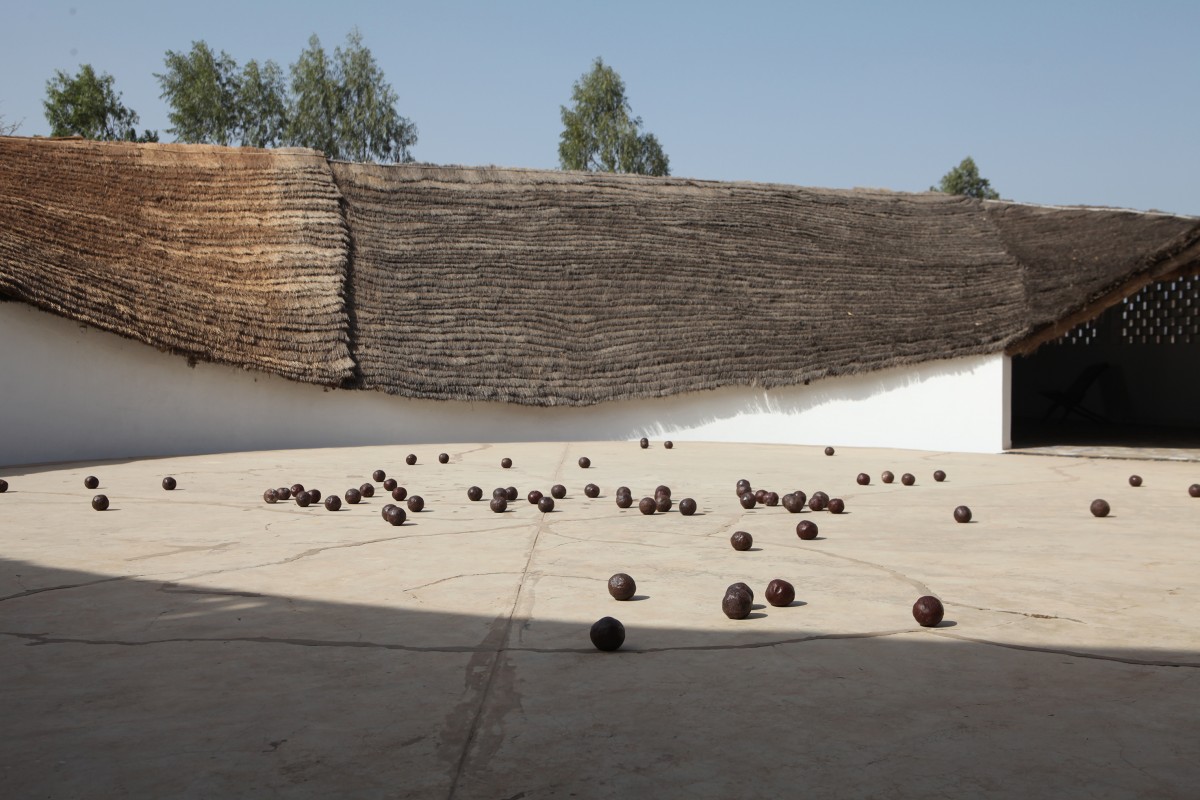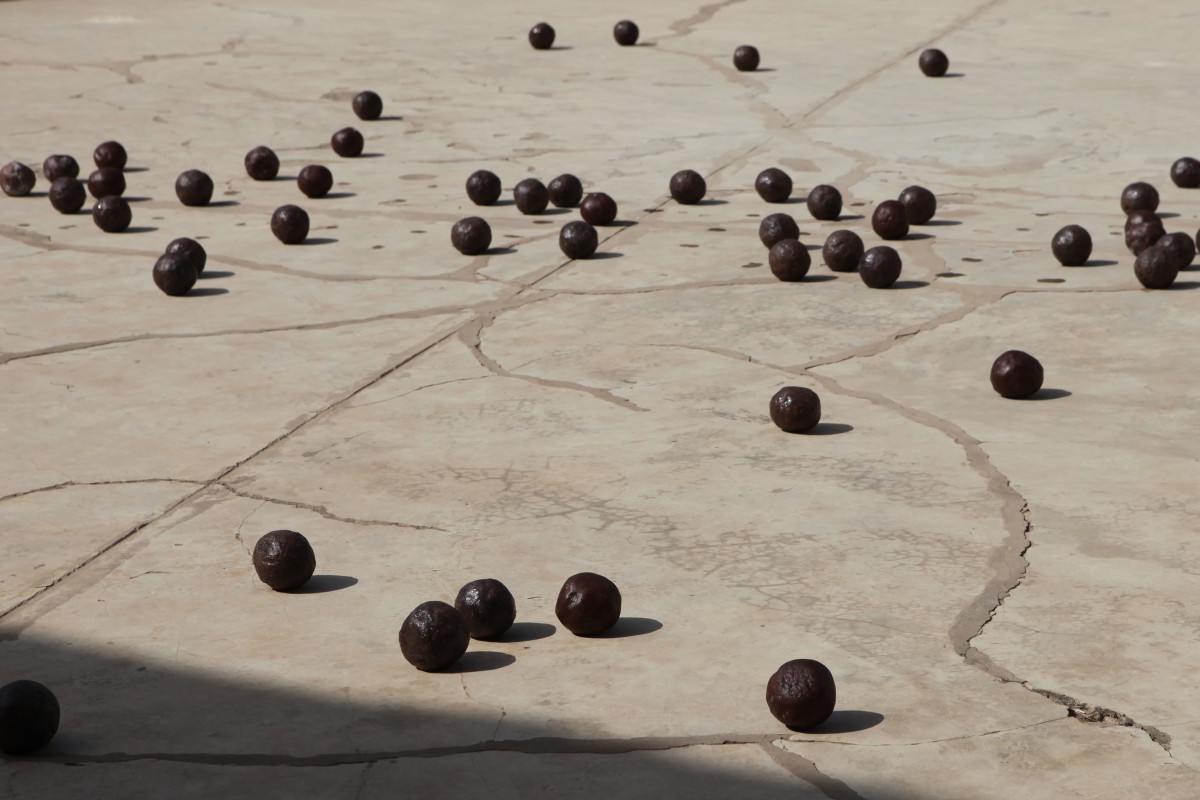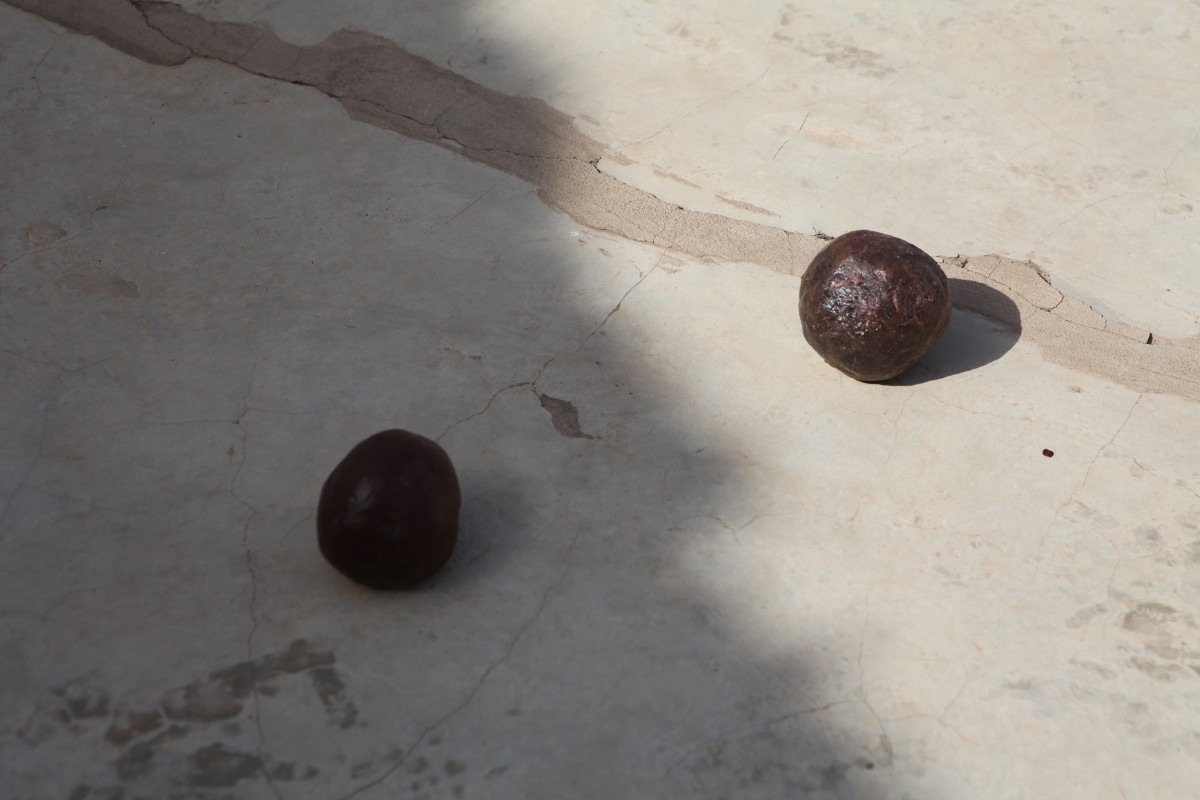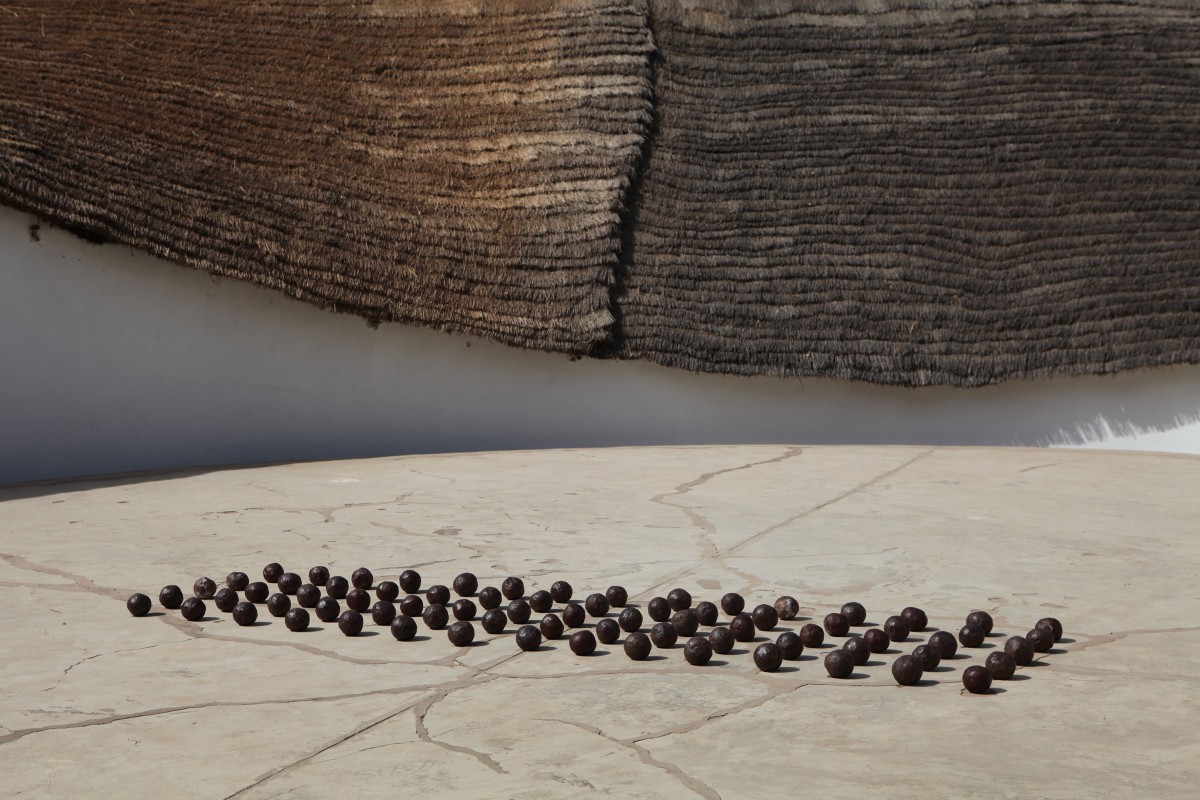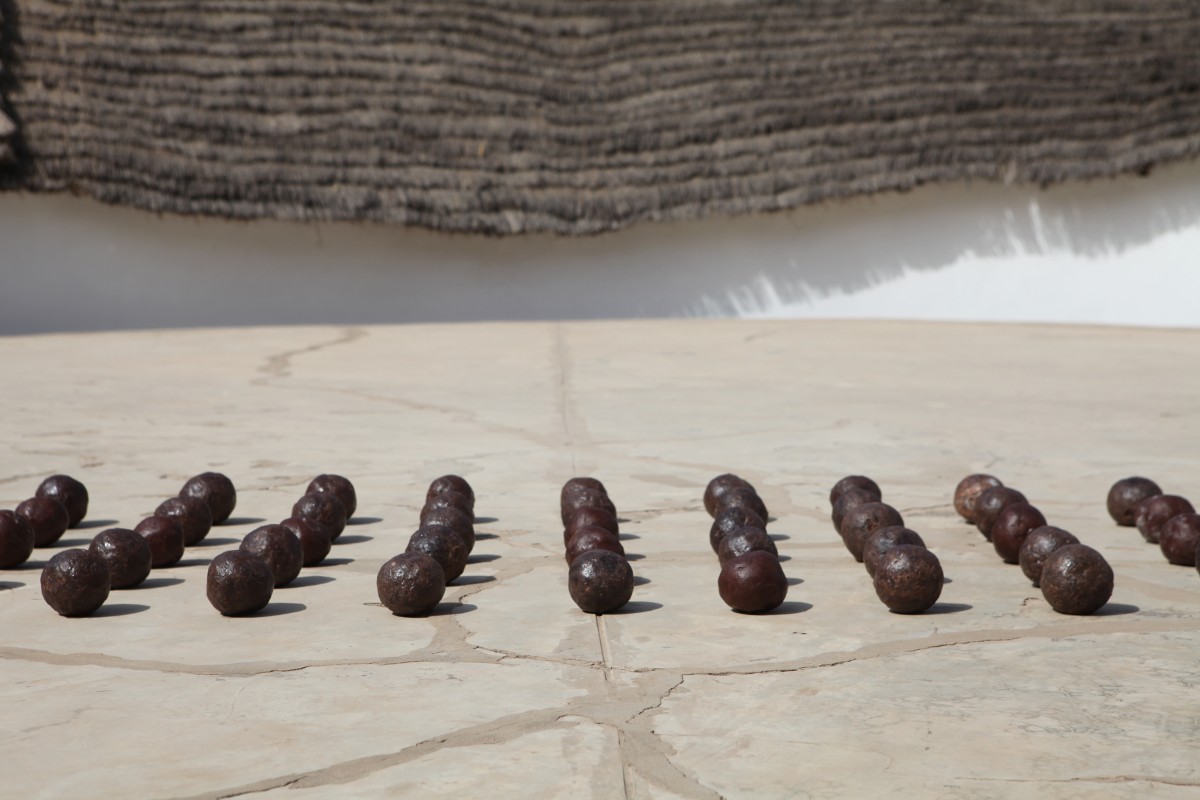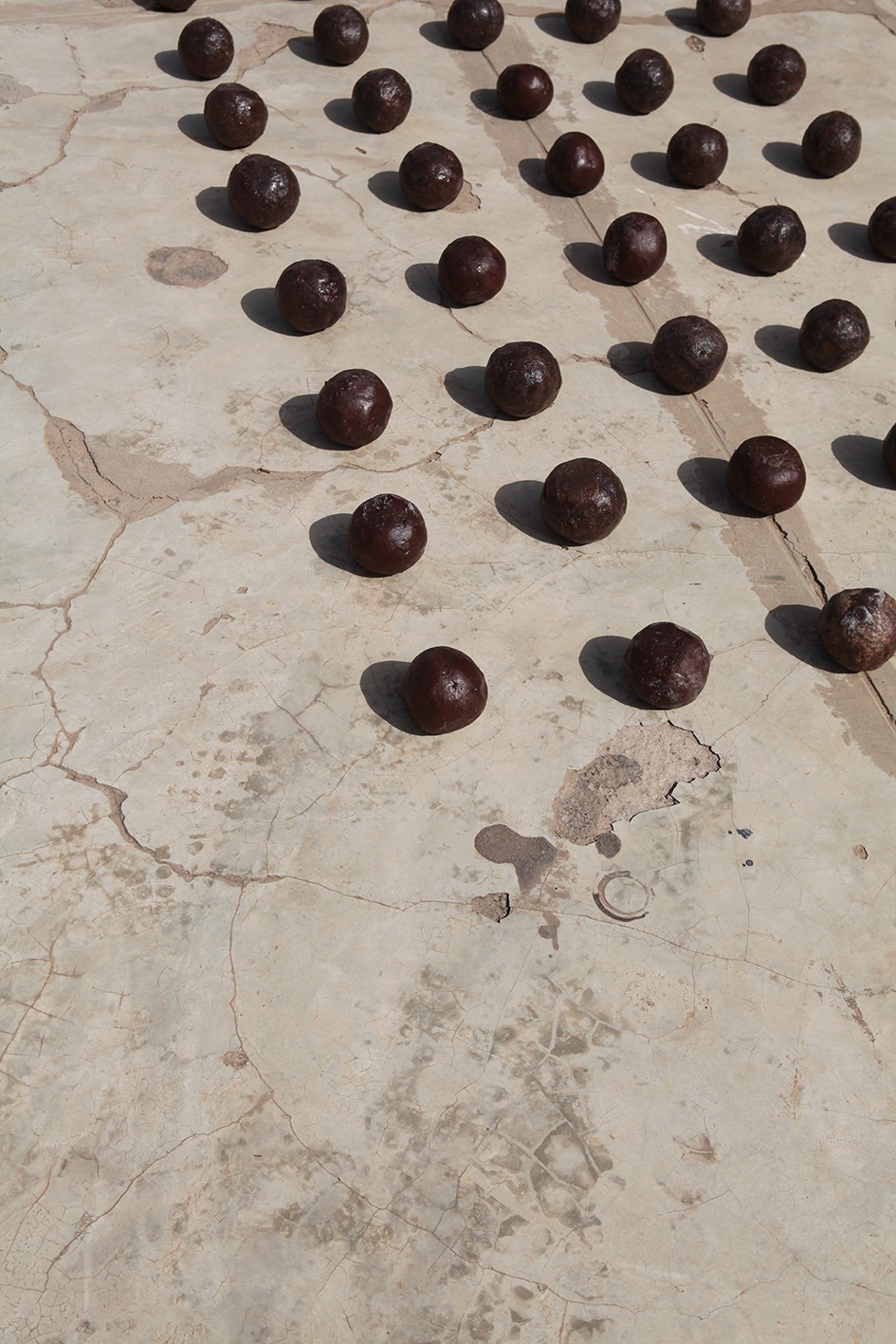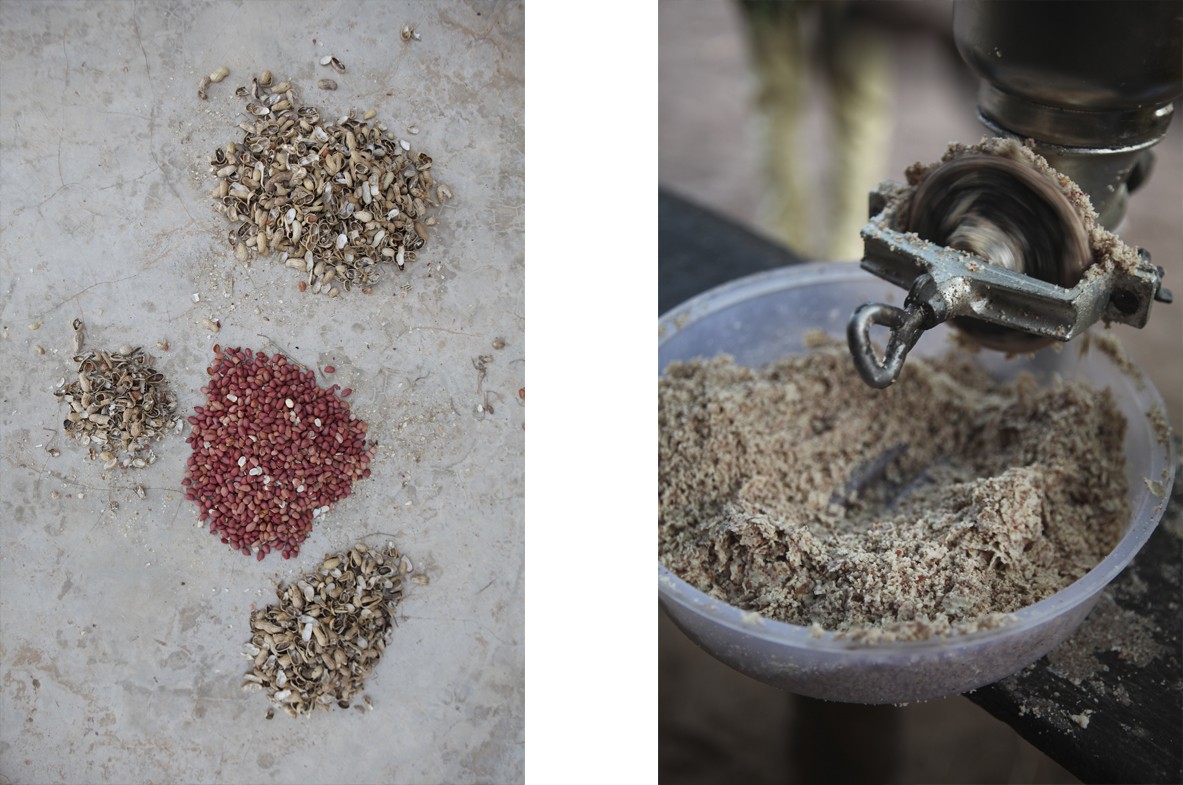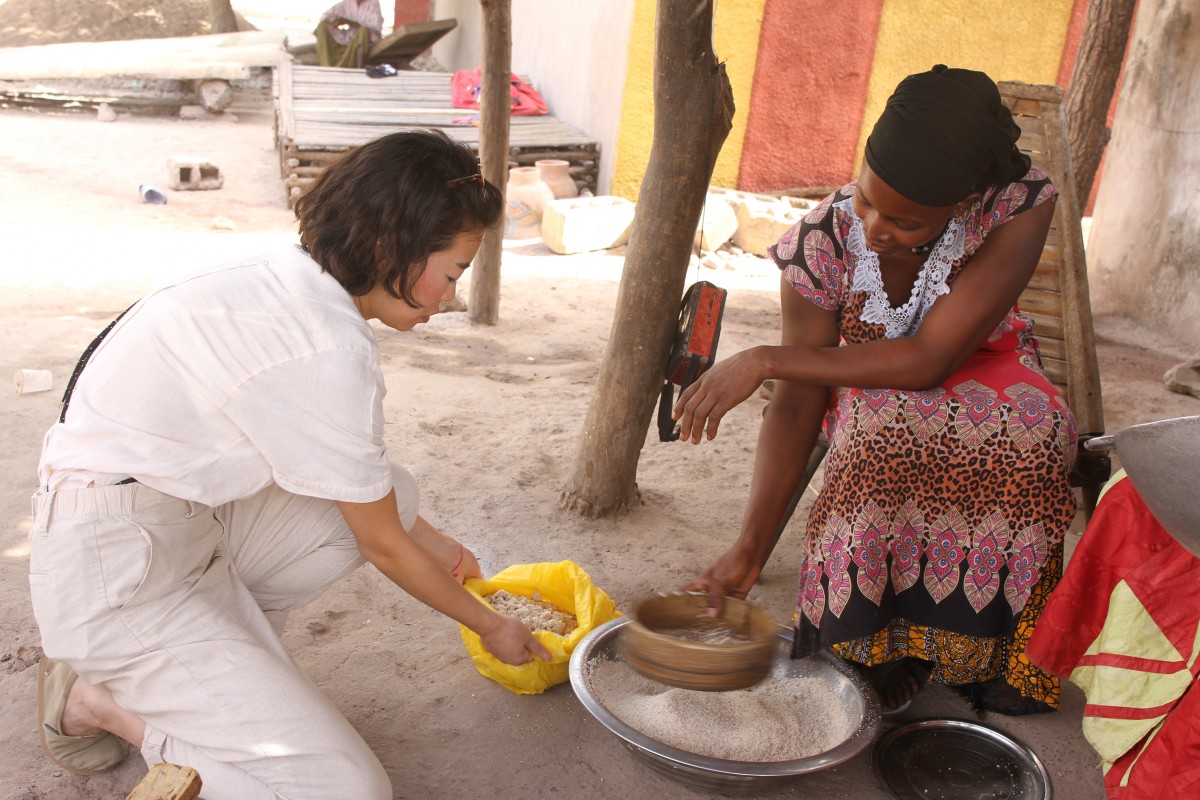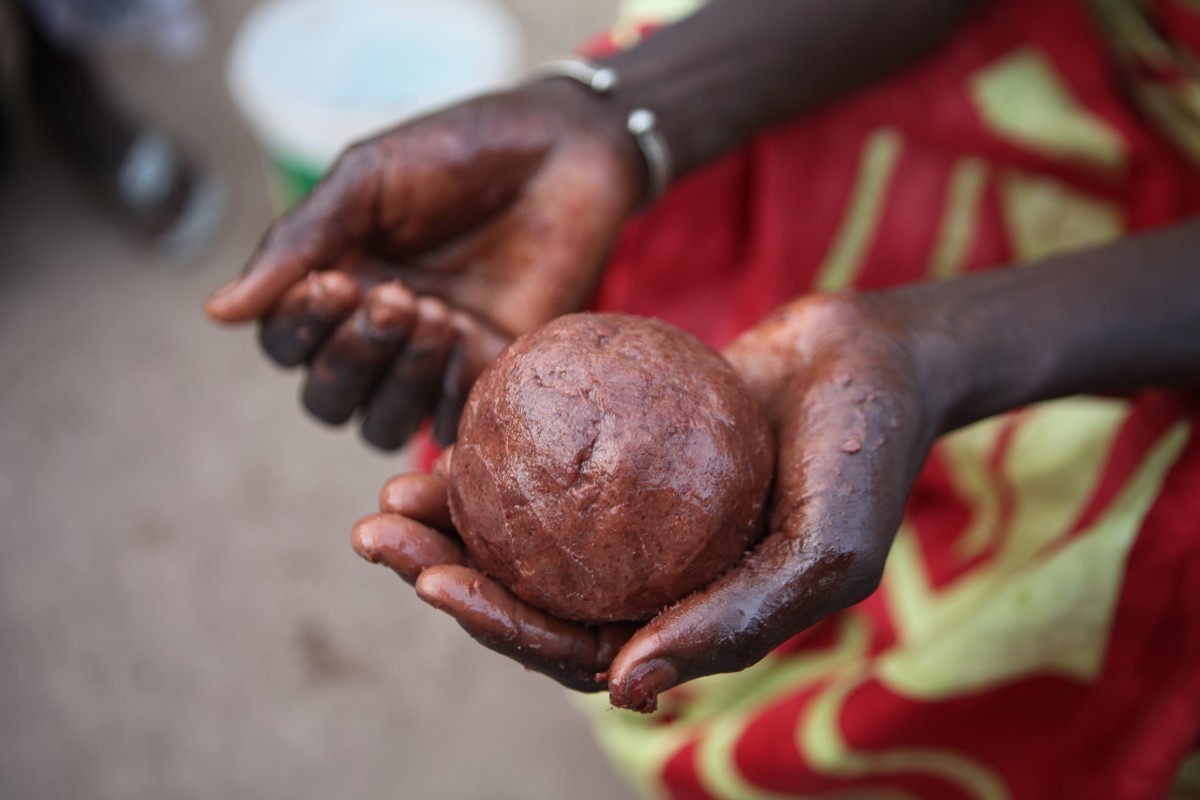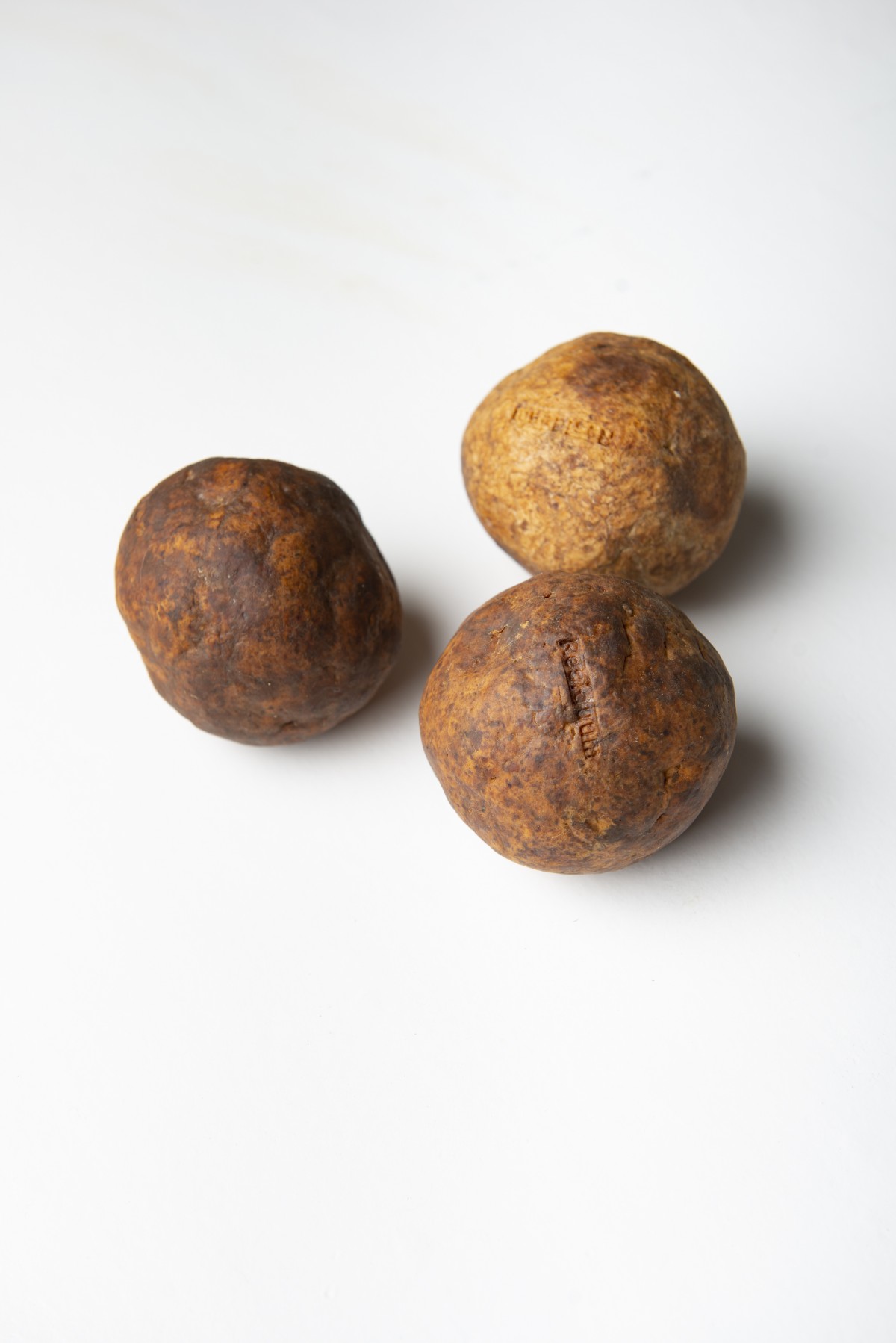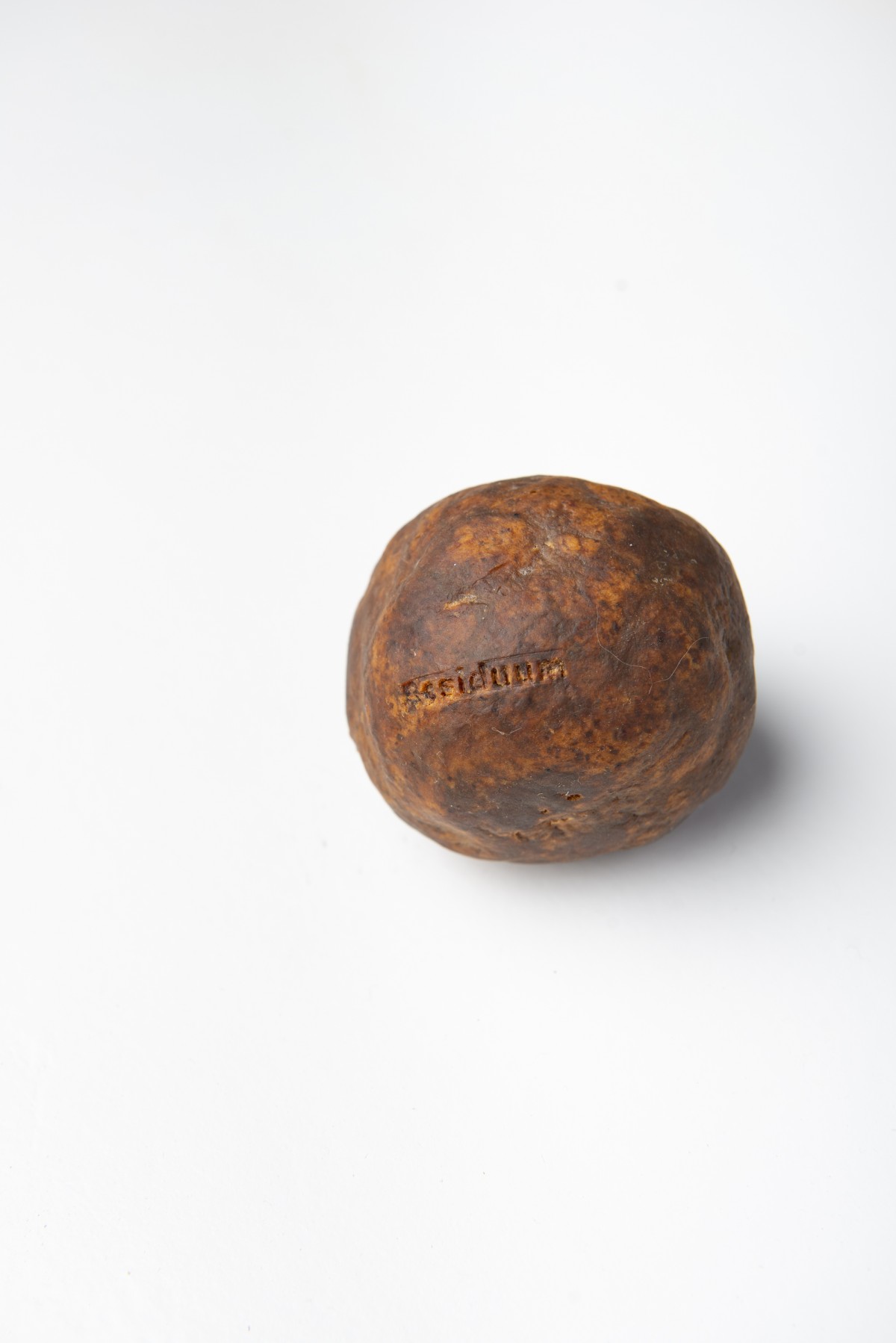EN
In collaboration with l’Association Savon de Tamba, Tambacounda and Ami Soumbou Cissokho, Ami Savené, Kadia Cissokho, Fanta Cissokho, Sinthian
We’re trapped in assemblies of temporalities, with a past that needs healing, a present global society with much in disrepair, and simultaneously a future we wish to prevent from becoming a repetition of the past.
In Residuum, Jeewi Lee merges these temporal planes into a global botanical story through the close examination of two seemingly banal consumer products: soap and peanuts. Beneath the surface of the palm-sized balls of brown soap an intertwining planetary history unfolds, a microcosm that the artist twists and turns seeking nuances of that which has been and that which is possible. At first glance, we recognise soap as an everyday product made from fatty acids and used for personal hygiene; in its basic formula, usage and form it has been culturally rooted in many societies for centuries. Its usage is tied to comprehensive hygiene and medical histories spanning narratives from cleanliness and self-care to spiritual purification and potential renewal – as explored by Jeewi Lee in Ashes to Ashes (2019).
In Residuum, soap, with all its functions, becomes a vehicle for a further story, namely that of the peanut. The artist has set the narrative far from the world’s capitalist centres, in a rural part of southeast Senegal. Here she explores the pervasive power of a natural resource that has re-shaped entire landscapes. The peanut, one of the fuels of Western industrialisation, reveals the hierarchical interplay of colonial relations: between rise and exploitation, factory and plantation, centre and periphery, visibility and invisibility. The aftermath: desertification and migration, exhaustion of man and nature, the erosion of life forms and knowledge. Feminist decolonial thinker Francoise Vergès describes it thus: „Colonization laid waste upon the earth“. Residuum is as well an artistic contemplation of the possibilities of cleansing a dark (dirty) history, as it is a move away from exploitation towards care. In her research and experimentation, the artist involved soap manufacturers in Tambacounda and Sinthian, calling on their individual competencies and skills for a communal result. The manufacturing process of the objects remains visible. Every ball of soap is a unique entity bearing traces of the hands that formed it.
DE
In Kollaboration mit l’Association Savon de Tamba, Tambacounda
und Ami Soumbou Cissokho, Ami Savené, Kadia Cissokho, Fanta Cissokho, Sinthian
Wir sind in Assemblagen aus Zeitlichkeiten gefangen, in einer Vergangenheit, die geheilt werden muss, in einer gegenwärtigen Weltgesellschaft, in der es vieles zu reparieren gibt und zur gleichen Zeit wollen wir die Zukunft davor bewahren wie die Vergangenheit zu werden. Mit einer dichten Materialverhandlung zweier scheinbar banaler Konsumgüter – Seife und Erdnuss - bringt Jeewi Lee in Residuum all diese Zeitebenen in einer globalen botanischen Erzählung miteinander in Kontakt. Unter der Oberfläche handtellergroßer brauner Seifenkugeln entfaltet sich eine planetarische Verflechtungsgeschichte, ein Mikrokosmos, den die Künstlerin dreht und wendet und nach Nuancen des Gewesenen und des Möglichen befragt. Seife ist auf den ersten Blick ein Alltagsprodukt der Körperreinigung auf der Basis von Fettsäuren, in Rezeptur, Gebrauch und Form ist sie in vielen Gesellschaften seit Jahrhunderten kulturell verankert. Ihre Nutzung verbindet sich mit kompletten Hygiene- und Krankheitsgeschichten, mit Erzählungen von Pflege und Self-Care, bis hin zur spirituellen Reinigung, und wie Jeewi Lee bereits in Ashes to Ashes (2019) zeigt, einem möglichen Neubeginn. In Residuum wird die Seife in all ihren Funktionen zum Trägerobjekt für eine weitere Erzählung, die der Erdnuss. Eine Narration, die die Künstlerin weit entfernt von den kapitalistischen Zentren der Welt stattfinden lässt, in einer ruralen Gegend, Im Südosten Senegals. Hier spürt sie den Durchmachtungen einer natürlichen Ressource nach, die ganze Landschaften geprägt hat. Anhand der Erdnuss, einem der Treibstoffe westlicher Industrialisierung, lässt sich ein hierarchisches Wechselspiel kolonialer Beziehungen nachverfolgen: zwischen Aufstieg und Ausbeutung, Fabrik und Plantage, Zentrum und Peripherie, Sichtbarkeit und Unsichtbarkeit. Die Hinterlassenschaften: Wüstenbildung und Migration, eine Erschöpfung von Menschen und Natur, die Erosion von Lebensformen und Wissen. „Colonization laid waste upon the earth“, so beschreibt es die feministische dekoloniale Theoretikerin Francoise Vergès. Residuum ist einerseits eine künstlerische Reflektion über Möglichkeiten der Reinigung von einer dunklen (schmutzigen) Vergangenheit und zum anderen über eine Abkehr von der Ausbeutung hin zur Pflege. In ihre Forschungen und Experimente involvierte die Künstlerin Seifenherstellerinnen in Tambacounda und Sinthian und aktivierte deren individuelle Kompetenzen und Fertigkeiten für ein gemeinsam verhandeltes Ergebnis. Der Herstellungsprozess der Objekte bleibt sichtbar. Jede Seife ist ein Unikat, sie trägt die Spuren der Hände, die sie geformt haben.
Text: Agnes Stillger
Special thanks to: l’Association Savon de Tamba, Ami Soumbou Cissokho, Ami Savené, Kadia Cissokho, Fanta Cissokho from Sinthian, Agnes Stillger, Cissé Kante, Thread Artists Residency of Josef and Anni Albers Foundation
